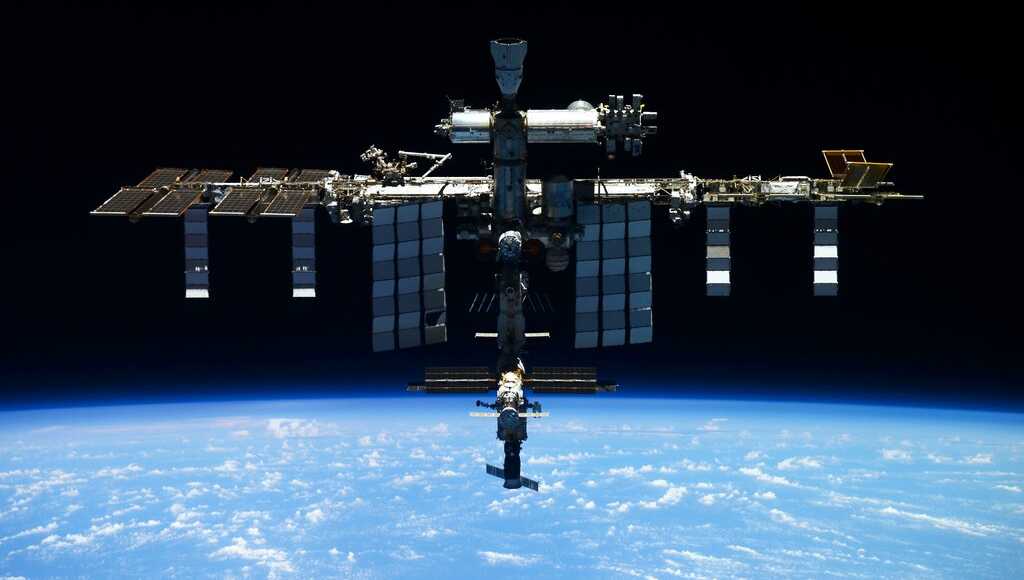Not a UFO! It’s the ISS over Wisconsin — How and when to see it

Given clear skies, Wisconsin will have the opportunity to see the International Space Station on Saturday night. According to information from NASA, the ISS will be visible starting at approximately 9:40 p.m. CST. It will appear as a fast-moving star gliding across the sky from west to east and will be visible without the need for telescopes or binoculars.The space station will be almost as luminous as Venus, the second-brightest object in our solar system and often mistaken for a UFO. At its peak, around 9:42 p.m., the ISS will be nearly overhead and positioned close to the constellation Ursa Major, commonly known as the Big Dipper. Why is the ISS visible from Earth?The ISS is visible from Earth because it reflects sunlight.The station’s large surface area, particularly its expansive solar panels and main structure, are coated in highly reflective material. When the ISS orbits above the horizon at dawn or dusk, the Sun’s rays hit its surface and reflect toward the Earth, creating a bright, moving point of light in the sky.The visibility of the ISS is also due to its relatively close proximity to Earth, at an average altitude of approximately about 260 miles. These factors combined make the ISS, along with the Moon, one of the brightest objects in the night sky. As with all astronomical events, visibility may be affected by weather and local light pollution levels.How big is the ISS?The ISS measures about 357 feet end to end, including its large solar panels, which power the station. Its size is often compared to that of an American football field.The astronaut’s living and working space is approximately 13,700 cubic feet. Overall, the habitable area of the ISS is designed to be functional, allowing astronauts to live in space for extended periods while conducting important scientific research. For updates on future sightings and more information on the ISS, visit NASA’s official website or follow the hashtag #ISS on social media.
Given clear skies, Wisconsin will have the opportunity to see the International Space Station on Saturday night.
According to information from NASA, the ISS will be visible starting at approximately 9:40 p.m. CST.
Advertisement
It will appear as a fast-moving star gliding across the sky from west to east and will be visible without the need for telescopes or binoculars.
The space station will be almost as luminous as Venus, the second-brightest object in our solar system and often mistaken for a UFO.
This content is imported from Twitter.
You may be able to find the same content in another format, or you may be able to find more information, at their web site.
At its peak, around 9:42 p.m., the ISS will be nearly overhead and positioned close to the constellation Ursa Major, commonly known as the Big Dipper.
Why is the ISS visible from Earth?
The ISS is visible from Earth because it reflects sunlight.
The station’s large surface area, particularly its expansive solar panels and main structure, are coated in highly reflective material.
When the ISS orbits above the horizon at dawn or dusk, the Sun’s rays hit its surface and reflect toward the Earth, creating a bright, moving point of light in the sky.
The visibility of the ISS is also due to its relatively close proximity to Earth, at an average altitude of approximately about 260 miles.
These factors combined make the ISS, along with the Moon, one of the brightest objects in the night sky.
As with all astronomical events, visibility may be affected by weather and local light pollution levels.
How big is the ISS?
The ISS measures about 357 feet end to end, including its large solar panels, which power the station. Its size is often compared to that of an American football field.
The astronaut’s living and working space is approximately 13,700 cubic feet.
Overall, the habitable area of the ISS is designed to be functional, allowing astronauts to live in space for extended periods while conducting important scientific research.
For updates on future sightings and more information on the ISS, visit NASA’s official website or follow the hashtag #ISS on social media.


